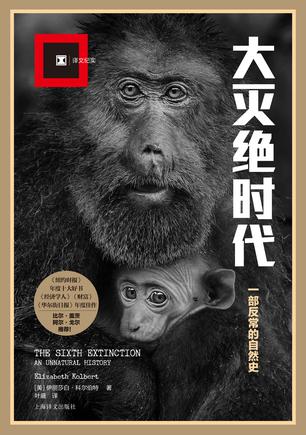-

Silent Spring
First published by Houghton Mifflin in 1962, Silent Spring alerted a large audience to the environmental and human dangers of indiscriminate use of pesticides, spurring revolutionary changes in the laws affecting our air, land, and water. "Silent Spring became a runaway bestseller, with international reverberations . . . It is] well crafted, fearless and succinct . . . Even if she had not inspired a generation of activists, Carson would prevail as one of the greatest nature writers in American letters" (Peter Matthiessen, for Time's 100 Most Influential People of the Century). This fortieth anniversary edition celebrates Rachel Carson's watershed book with a new introduction by the author and activist Terry Tempest Williams and a new afterword by the acclaimed Rachel Carson biographer Linda Lear, who tells the story of Carson's courageous defense of her truths in the face of ruthless assault from the chemical industry in the year following the publication of Silent Spring and before her untimely death in 1964. -

商业生态学
传统商业活动对地球资源大量吞噬所导致的生态环境恶化使人类生存的可持续性面临空前挑战,而环保主义者和支持环保企业的种种措施也未能触及问题的要害。《商业生态学:可持续发展的宣言》指出,环境问题的关键是设计而非管理问题,创造一个可持续发情的商业模式才是我们惟一的真正出路。在该模式中,企业“对社会负责”是自我推动的,与利益最大化的市场原则一致,而非道德或规章约束的。《商业生态学:可持续发展的宣言》观点新颖,耐人寻味,1998年被美国67所商学院教授评选为商业和环境学教材的第一名。 -

寂静的春天
《寂静的春天》是美国女作家蕾切尔·卡逊的代表作,也是50年以来全球最具影响的著作之一!该以寓言开头,向我们描绘了一个美丽村庄的突变。并从陆地到海洋,从海洋到天空,全方位地揭示了化学农药的危害,是一本公认的开启了世界环境运动的奠基之作,它既贯穿着严谨求实的科学理性精神,又充溢着敬畏生命的人文情怀,被称为其引发的轰动比达尔文的《物种起源》都要大。 “人类正在毁灭于自己热爱的事物”,卡逊这样警示着狂热的人们。正是这本不寻常的书,唤起了人们的环境意识,促使环境保护问题提到了各国政府面前,各种环境保护组织纷纷成立,从而促使联合国于1972年6月12日在斯德哥尔摩召开了“人类环境大会”,并由各国签署了“人类环境宣言”,开始了环境保护事业。 -

大灭绝时代
2015年第99届普利策非虚构类写作奖 2014年全球环保话题之书 我们时代的《寂静的春天》 《纽约时报》《华盛顿邮报》《图书馆杂志》年度十大好书 《经济学人》《华尔街日报》《财富》年度推荐好书 比尔•盖茨、阿尔•戈尔等名人与多家媒体推荐 《纽约客》记者伊丽莎白•科尔伯特一一亲历全球生态现场,穿插结合三百年科学认知与最新锐生态观点,为读者画出了今天世界的轮廓:我们的确生活在一个非同凡响的时代,第六次物种大灭绝已经开始。 故事有十三个。前几个故事所涉及的美洲乳齿象、大海雀还有菊石已经灭绝了,这一部分主要介绍远古的大灭绝及其曲折的发现过程。第二部分陈列当下的事实,在日益支离破碎的亚马孙雨林中,在迅速变暖的安第斯山坡面,在大堡礁的外围海域里。 巨变的范围是如此广大,只要在正确的指引之下,随便去哪里都能发现灭绝的现象。最后还有一个故事所讲述的灭绝差不多算是发生在我家后院——说不定,也同时发生在你家。随着故事的推进,读者也能像科学家一样渐渐意识到:当前发生的这一轮大灭绝,源头就在人类自己身上。 -

寂静的春天
作者在《寂静的春天》一书中以女性作家特有的生动笔触,详尽细致地讲述了以DDT为代表的杀虫剂的广泛使用,给我们的环境所造成的巨大的、难以逆转的危害。正是这个最终指向人类自身的潜在而又深远的威胁,让公众突然意识到环境问题十分严重,从而开启了群众性的现代环境保护运动。不仅如此,卡逊还尖锐的指出了,环境问题的深层根源在于人类对于自然的傲慢和无知,因此,她呼吁人们要重新端正对自然的态度,重新思考人类社会的发展道路问题。 今日中国,一方面是持续的经济增长,另一方面则是环境的持续恶化。环境污染带来的问题早就不是潜在问题而是触目惊心的现实。全世界十大严重污染城市(太原、米兰、北京、乌鲁木齐、墨西哥城、兰州、重庆、济南、石家庄、德黑兰)中,中国占7个。近三分之二的城市空气达不到我们自己制定的(较低的)国家二级标准。河流湖泊全面污染,已经危及日常用水。由于环境污染,癌症患者急剧增多,且有明显低龄化趋势。癌症村如雨后春笋般在中国的大地上涌现,成为与经济起飞奇迹相伴随的另一大奇迹。与如此恶劣的环境恶化相比,中国社会各阶层的环境保护意识都远远没有跟上。多数人希望通过科学和技术的发展来解决这些问题,而没有意识到这些问题恰恰根源于我们现代性的存在方式。环境问题的彻底解决,要求一个从观念、制度到生产生活方式的彻底改变,而第一步,是对问题本身有充分的意识。 45年前出版的这本书对美国人而言或许有些过时,对中国人来说却显得是一篇委婉的时事报告文学。环境是属于全体人民的,但归根结底是属于青年人的。愿青年读者,通过阅读本书优美的英文,不仅提高了英文水平,而且感受到作者苦心孤诣的生命讴歌和未来忧思,从而反省现代人的存在方式,肩负起拯救人类未来的伟大责任。 -

The World Without Us
A penetrating, page-turning tour of a post-human Earth In The World Without Us, Alan Weisman offers an utterly original approach to questions of humanity’s impact on the planet: he asks us to envision our Earth, without us.In this far-reaching narrative, Weisman explains how our massive infrastructure would collapse and finally vanish without human presence; which everyday items may become immortalized as fossils; how copper pipes and wiring would be crushed into mere seams of reddish rock; why some of our earliest buildings might be the last architecture left; and how plastic, bronze sculpture, radio waves, and some man-made molecules may be our most lasting gifts to the universe.The World Without Us reveals how, just days after humans disappear, floods in New York’s subways would start eroding the city’s foundations, and how, as the world’s cities crumble, asphalt jungles would give way to real ones. It describes the distinct ways that organic and chemically treated farms would revert to wild, how billions more birds would flourish, and how cockroaches in unheated cities would perish without us. Drawing on the expertise of engineers, atmospheric scientists, art conservators, zoologists, oil refiners, marine biologists, astrophysicists, religious leaders from rabbis to the Dali Lama, and paleontologists---who describe a prehuman world inhabited by megafauna like giant sloths that stood taller than mammoths---Weisman illustrates what the planet might be like today, if not for us.From places already devoid of humans (a last fragment of primeval European forest; the Korean DMZ; Chernobyl), Weisman reveals Earth’s tremendous capacity for self-healing. As he shows which human devastations are indelible, and which examples of our highest art and culture would endure longest, Weisman’s narrative ultimately drives toward a radical but persuasive solution that needn't depend on our demise. It is narrative nonfiction at its finest, and in posing an irresistible concept with both gravity and a highly readable touch, it looks deeply at our effects on the planet in a way that no other book has.